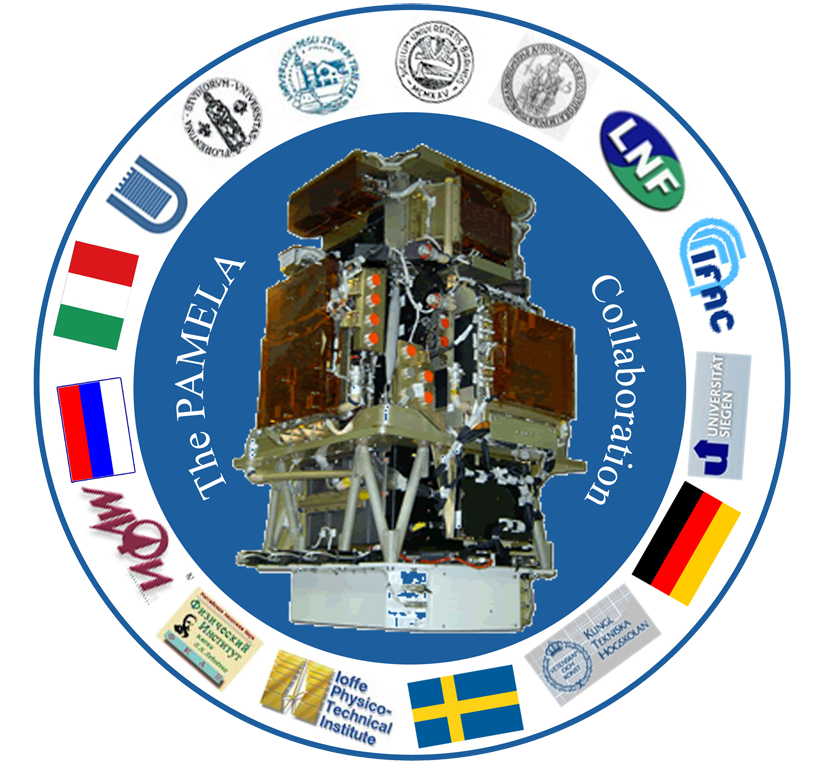PAMELA and the High Energy Astrophysics Laboratory

|
The High Energy Astrophysics Laboratory (HEA Lab) of Ioffe Physical-Technical Institute is the member of international PAMELA collaboration beginning from 1996, when the Cosmic Spectrometry Laboratory of Ioffe Institute (which has been included in the structure of HEA Lab in November 2010) has begun work on GEANT simulation for optimization of PAMELA space magnetic spectrometer design and investigation of background conditions by measurement of spectra and composition of galactic cosmic rays in the energy range ~ 0.1 - 1000 GeV. The members of PAMELA collaboration are the following: Italy (affiliated branches of National Institute for Nuclear Physics - INFN in Roma, Trieste, Florence, Bari, Naples, and Frascati), Russia (Moscow Engineering and Physics Institute - MEPhI, Lebedev Institute of RAS, Ioffe Institute of RAS), Sweden (Royal Institute of Technology), and Germany (Siegen University). Magnetic spectrometer PAMELA is mounted onboard the Resurs-DK1 Russian satellite taken to the orbit with inclination 700 and altitude between 350 km and 610 km in 15 June 2006. Daily volume of information coming from apparatus is ~ 16 TB. |
|
|
The main aims of the PAMELA experiment are the investigation of cold dark matter nature by means of registration of antiproton and positron spectra in galactic cosmic rays in the wide energy range ~ 0.1 - 300 GeV, measurement of electron spectrum with energies up to ~ 1000 GeV, spectra of nuclei from hydrogen to carbon in the energy range up to hundreds GeV/nucleon, isotopic composition of light nuclei from hydrogen to beryllium in the energy range ~ 0.1 - 3.0 GeV/nucleon, solar cosmic rays and trapped radiation in the near-earth space. After launch of apparatus the main tasks of laboratory were GEANT4 simulation for optimization of flight information analysis methods to minimize background by measurement of electron and positron spectra, investigation of background of secondary negative pions by measurement of antiproton spectrum, and development of isotopic analysis methods. |
A Remarkable Result of PAMELA! |
|
|
At the analysis of PAMELA flight information obtained during powerful solar explosions in December 2010 the evidences of registration of solar neutrons with energies ~ 4 - 6 MeV have been fixed possibly. Now for determining isotopic composition of nuclei from hydrogen to beryllium at rigidity up to ~ 5 GV the analysis of flight data is carrying out by using methods developed in the laboratory. Preliminary data on lithium and beryllium isotopes show that significant contribution of local sources (placed within hundreds of parsecs) of cosmic rays to the fluxes of galactic cosmic rays is possible. This trend possibly appears in the results of investigations of positrons, antiprotons, hydrogen and helium spectra, which have been performed in the frame of the PAMELA experiment. |
||